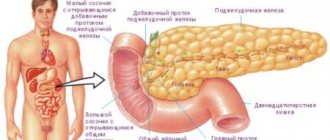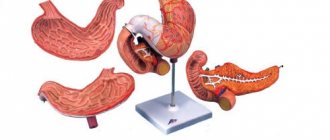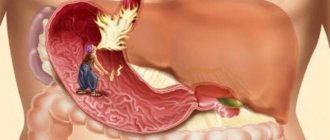Staphylococcus aureus is a spherical prokaryote, a rich yellow bacterium that looks like a bunch of grapes, which can be clearly seen in pictures taken under a microscope.
The microorganism belongs to the group of opportunistic microflora - it is present in small quantities in the body of every person, and begins to actively grow and multiply in the presence of provoking factors. Staphylococcus aureus is a fairly tenacious bacterium, it tolerates the lack of water and high temperatures well, it does not die immediately even when boiled, it is not affected by alcohol, hydrogen peroxide, salt, or vinegar. But the pathogenic microorganism can be destroyed using ordinary brilliant green.
There is no consensus among doctors regarding the carriage of staphylococcus; many doctors believe that it is useless to treat it if there are no manifestations of pathology. An exception is pregnant women; expectant mothers must undergo appropriate tests; if a pathogenic microorganism is detected, urgent treatment will be prescribed.
Children under one year of age should not normally have Staphylococcus aureus in their bodies.
What it is?
Staphylococcal infection is the general name for diseases caused by staphylococcus. Due to high resistance to antibiotics, staphylococcal infections occupy first place among purulent-inflammatory infectious diseases. Staphylococcus can cause inflammation in almost any organ. Staphylococcus can cause purulent diseases of the skin and subcutaneous tissue: boils, felons, abscesses, hidradenitis, pyoderma. By affecting internal organs, staphylococcus can cause pneumonia, sore throat, endocarditis, osteomyelitis, meningitis, and abscesses of internal organs. The enterotoxin secreted by staphylococcus can cause severe food intoxication with the development of enterocolitis (inflammation of the small and large intestines).
The genus of staphylococci includes three species: Staphylococcus aureus (the most harmful), Staphylococcus epidermidis (also pathogenic, but much less dangerous than Staphylococcus aureus) and saprophytic Staphylococcus - practically harmless, however, also capable of causing diseases. In addition, each type of staphylococcus has several subspecies (strains), differing from each other in various properties (for example, a set of toxins produced) and, accordingly, causing the same diseases, differing in clinical signs (manifestations). Under a microscope, staphylococci appear in clusters somewhat similar to a bunch of grapes.
Staphylococci have a fairly high viability: they can be stored in a dried state for up to 6 months, do not die when frozen and thawed, and are resistant to direct sunlight.
The pathogenic effect of staphylococci is associated with their ability to produce toxins: exfoliatin, which damages skin cells, leukocidin, which destroys leukocytes, and enterotoxin, which causes clinical food poisoning. In addition, staphylococcus produces enzymes that protect it from the effects of immune mechanisms and contribute to its preservation and distribution in the tissues of the body.
The source of infection can be a sick person or an asymptomatic carrier; according to some data, up to 40% of healthy people are carriers of various strains of Staphylococcus aureus. The entrance gates of infection can be microdamages of the skin and the mucous membrane of the respiratory tract. A significant factor in the development of staphylococcal infections is weakened immunity due to the use of medications (for example, immunosuppressants, antibiotics), chronic diseases (diabetes mellitus, thyroid diseases), and exposure to adverse environmental factors. Due to the characteristics of the immune system, staphylococcal infections are most severe in young children and old people. Immunity after an infection is unstable and, in general, insignificant, since when encountering a new subspecies of staphylococcus that produces other toxins, all previous immune “acquisitions” do not play a significant protective role.
Causes of infection
Staphylococci constantly live on the skin and mucous membranes. Bacteria can enter the body in several ways: household contact, airborne droplets, alimentary:
- With the contact-household method, the bacteria enters the body through household items. This is the most common route of transmission of infection.
- If a carrier of bacteria coughs or sneezes, the bacteria are released along with the air. As a result, when inhaling air contaminated with staphylococci, microorganisms enter the body and, with a decrease in immunity, provoke the development of diseases.
- With the nutritional mechanism of infection, bacteria penetrate inside through food. Due to poor personal hygiene, microorganisms appear on food products. Typically, carriers are food industry workers.
Pathogenic staphylococcus can enter the body when using insufficiently sterilized medical instruments. The infection enters the body during surgery or through the use of instrumental diagnostic methods, insertion of a catheter, etc. If a pregnant woman has staphylococcus, it is transmitted to the baby.
What diseases does Staphylococcus aureus cause?
Staphylococcus aureus is capable of infecting most tissues of the human body. In total, there are more than a hundred diseases that are caused by staphylococcal infection. Staphylococcal infection is characterized by the presence of many different mechanisms, routes and transmission factors.
Staphylococcus aureus can extremely easily penetrate through minor damage to the skin and mucous membranes into the body. Staphylococcal infection can lead to various diseases - from acne (acne) to peritonitis (inflammation of the peritoneum), endocarditis (inflammation of the inner lining of the heart) and sepsis, which has a mortality rate of around 80%. In most cases, staphylococcal infection develops against the background of a decrease in local or general immunity, for example, after an acute respiratory viral infection (ARVI).
Community-acquired pneumonia, which is caused by Staphylococcus aureus, is recorded infrequently, but in inpatient departments this type of pathogenic staphylococcus ranks second in importance among all pathogens (Pseudomonas aeruginosa is in first place). Nosocomial or nosocomial infections can occur due to the penetration of Staphylococcus aureus through various catheters or from skin wounds into the body.
Staphylococcus aureus is the main causative agent of musculoskeletal infections. This pathogenic bacterium causes septic (infectious) arthritis in children and adolescents in 75% of cases.
Staphylococcus aureus can cause the following diseases:
- rhinitis;
- sinusitis;
- pharyngitis;
- laryngitis;
- bronchitis;
- pneumonia;
- osteomyelitis;
- food poisoning;
- pyoderma;
- "scalded baby" syndrome.
Signs in adults
Staphylococcal infection can settle in various organs and tissues, and among the diseases caused by it, cutaneous forms are especially prominent:
- Pyoderma.
- Furunculosis.
- Carbunculosis.
- Felon.
- Phlegmon.
- Erysipelas (erysipelas), etc.
In adults, signs of staph infection may vary depending on the location of the infection. The disease does not always lead to a deterioration in general health and the appearance of signs of intoxication. Such signs occur only with a serious purulent process.
Symptoms on the face
Penetration of infection into the skin of the face usually leads to the appearance of a rapidly spreading purulent rash. The patient is faced with a significant number of acne - deep subcutaneous inflammations that cause noticeable pain. Such elements of the rash are bright red in color, and the surrounding tissues look swollen. As the purulent and inflammatory process develops, a white head forms in the central part of the pimple - this is how the pus rises up. Over time, it changes its color to a more yellow one and bursts (opens). At the site of inflammation, scarring may remain - pits in the skin.
In men, staphylococcal infection can manifest itself in the area of the beard and mustache and occur in the form of staphylococcal sycosis. This disease can be suspected by:
- Formation of superficial follicles. In this case, pustules appear in groups, capturing areas of healthy skin.
- The appearance of redness and swelling.
- The appearance of painful sensations.
- The formation of greenish or yellowish crusts.
- Peeling and weeping of injured areas.
The appearance of painful purulent growths on the face is a reason to immediately seek medical help. You cannot fight the disease with folk remedies, squeeze out pimples and ignore them - this can be dangerous.
What does it look like on the skin of your hands?
Staphylococcus may well lead to the appearance of pustules on the skin of the hands. But a much more typical symptom of damage to such a localization is the development of panaritium - damage to the fingers and periungual ridges. At the same time, a person is worried about:
- Severe redness of the affected areas.
- Significant pain.
- Twitching sensation.
- Noticeable swelling and swelling.
- Accumulation of pus under the skin. A blister with purulent contents may be visible
- Change in nail color.
Without prompt treatment, inflammation can easily spread to healthy fingers and also lead to inflammation of the nail plates.
Such symptoms also require mandatory seeking of medical help. If the purulent infection progresses, you can at least lose your nail, and at maximum, you can face serious complications.
How does it appear on the body?
Most often, staphylococcus on the body looks like a purulent rash. A similar symptom can appear in various areas, but most often the place of its localization is the upper half of the body, for example, the chest, back or abdomen. A staph rash may appear as a cluster of deep red pimples that have white heads in the center. Such rashes can hurt on their own, but when pressed, the pain increases by an order of magnitude.
Staphylococcal infection can also lead to other lesions, for example:
- Boil. This is an inflammatory process in the sebaceous or hair follicle. With this pathology, a painful lump forms deep under the skin, and the skin above it becomes hot and reddened. Over time, an abscess forms and the pus rises up and becomes visible, like a white head on a pimple.
- Phlegmon. This is a fairly serious purulent subcutaneous inflammation, which is manifested by severe swelling of the skin. The affected area turns red and becomes hot to the touch. Body temperature rises, increased weakness occurs. The appearance of the described signs is a reason to immediately seek medical help.
Staphylococcal infection on the body can be successfully treated. But for effective therapy, correct diagnosis by a doctor is important.
Erysipelas
The classic disease “erysipelas” is of streptococcal origin, but doctors separately consider the so-called staphylococcal erysipelas. This disease is characterized by fairly clear symptoms:
- Redness of the skin. The lower extremities are most often affected.
- The appearance of dense swelling of the affected area.
- The appearance of small rashes at the site of the lesion.
- Increasing temperature indicators up to 40 ° C.
- Vivid signs of intoxication, in particular nausea and vomiting.
Erysipelas significantly worsens a person’s overall well-being. This serious illness requires immediate medical attention - calling an ambulance.
Symptoms of Staphylococcus aureus
Specific clinical manifestations of staphylococcal infection depend on the site of introduction of the microorganism and the degree of decreased immunity in the patient. For example, in some people infection ends with a simple boil, and in weakened patients - with an abscess and phlegmon, etc.
General symptoms characteristic of Staphylococcus aureus in adults:
- fast fatiguability;
- general weakness;
- lack of appetite;
- aches in bones and joints;
- nausea and vomiting;
- increase in body temperature.
These are common signs of infection by harmful bacteria. Depending on the strength of the immune system and the resistance of the body’s systems, this list may be supplemented by other symptoms that more specifically indicate the type of disease.
Skin damage
Skin infections are characterized by rashes on the skin, the appearance of blisters with purulent contents, crusts, redness, and induration.
Infections of ENT organs and eyes
Getting on the mucous epithelium of the throat or nose, staphylococcal infection provokes the occurrence of sore throat, otitis media, sinusitis and other inflammatory pathologies of the ENT organs or upper respiratory tract.
When Staphylococcus aureus infects the lungs, staphylococcal pneumonia develops, characterized by the appearance of shortness of breath and chest pain, severe intoxication of the body and the formation of many purulent formations in the lung tissues, gradually transforming into abscesses. When abscesses break into the pleural cavity, suppuration of the pleura (empyema) develops.
When the mucous membrane of the eyes is damaged, conjunctivitis develops (photophobia, lacrimation, swelling of the eyelids, purulent discharge from the eyes).
Staphylococcus aureus affects the genitourinary system
Urinary tract infection caused by Staphylococcus aureus is characterized by:
- urination disorder (frequency, pain),
- slight fever (sometimes there may be no fever),
- the presence of pus, blood admixtures and the detection of Staphylococcus aureus during general and bacteriological examination of urine.
Without treatment, staphylococcus can infect surrounding tissues (prostate gland, perinephric tissue) and cause pyelonephritis or form kidney abscesses.
CNS damage
If Staphylococcus aureus enters the brain, there is a high probability of developing meningitis or a brain abscess. In children, these pathologies are extremely severe and cases of death are not uncommon. Characteristic symptoms:
- intoxication syndrome;
- hyperthermia;
- severe vomiting;
- meningeal symptoms are positive;
- elements of a rash appear on the skin.
Food poisoning
It develops when eating contaminated or spoiled food and occurs with symptoms of acute enterocolitis. Characterized by fever, nausea, vomiting up to 10 or more times a day, loose stools mixed with greens.
Staphylococcus aureus is a dangerous type of bacteria that causes many infections when the patient’s immune system is weakened. If you notice the first general symptoms (lethargy, nausea, lack of appetite), you should immediately consult a doctor.
Damage to the musculoskeletal system
This pathogen is the leading cause of purulent lesions of the musculoskeletal system (osteomyelitis and arthritis). Such pathological conditions develop more often in adolescents. In adults, staphylococcal arthritis often develops against the background of existing rheumatism or after joint replacement.
Staphylococcus aureus: content standards and caused pathologies - Website about
Staphylococcus is a conditionally pathogenic flora. This microorganism remains on the human body almost all the time. In moderate quantities it does not pose a clear threat to human health and life. If the number of staphylococci is normal, then there is no need to worry.
When favorable conditions arise, the number of microorganisms increases sharply. Most often this is observed with a decrease in immunity, which occurs during an acute or chronic disease.
From this article you will learn about the features of the development of the disease, its diagnosis and test indicators.
Routes of infection
Staphylococcus is resistant to external factors, it is not afraid of the scorching sun, frost, exposure to drugs containing alcohol, and so on. A very fast route of transmission from one person to another.
The pathogenic microorganism can be in the body of an animal, child or adult. Staphylococcus in infants' stool is normal for most children of this age.
Main routes of transmission:
- everyday way, when using personal funds of a sick person.
- airborne droplet path,
- through poorly processed medical instruments;
- airborne dust method, a huge amount of staphylococcus is in the dust that a person inhales.
Types of tests for staphylococcus
If a staphylococcal infection is suspected, the doctor recommends certain tests.
Timely identification of pathogenic bacteria increases the effectiveness of drug therapy and protects against complications.
Let's look at the most common types of analyzes.
Blood analysis. Most often, a general blood test is used, which shows the amount of leukocytes and staphylococci. It is necessary to visit the laboratory in the morning, on an empty stomach.
ATTENTION! It is not recommended to take antibiotics or antiviral drugs for several days before the test. They may cause incorrect test results.
Analysis of urine . A few days before the test, it is not recommended to use diuretics. Before donation, it is necessary to carry out hygienic procedures to clean the genitals.
It is better to purchase a sterile container from a pharmacy. If this is not possible, first scald the jar with boiling water. An average portion of urine is required for analysis. The container is filled to half.
Stool analysis . The collected biological material is examined by sowing to identify the nutrient medium. It is not recommended to take laxatives before donating stool.
The collection container must be sterile or treated with boiling water.
It is strictly forbidden to take material from the toilet, as there may be other microbes there.
Analysis of material from mucous membranes . The material can be taken from the mouth, nose, lower eyelid. If the analysis is taken from the throat, then you should not brush your teeth or eat food before the collection. It is recommended to drink plenty of plain or mineral water. The analysis will quickly show the excess or norm of staphylococcus in a throat smear.
Urogenital smear. A man should not urinate for several hours before collecting material. Women hand over the material 3 days before the onset of menstruation or three days after.
Skin scraping. The analysis is carried out if there is a wound on the skin. The skin around the wound is first treated with an antiseptic solution and dried blood is removed.
Tests will help identify the disease that caused staphylococcus. If the norm of staphylococcus content in the body is not exceeded, then the person is healthy.
Tests are prescribed during a routine medical examination of medical workers, food industry workers, and salespeople. Strict adherence to the recommendations for taking the analysis will give the most accurate results. Only after receiving the results can the doctor prescribe the most effective drug therapy.
How to submit biological material for analysis correctly
It is not recommended to take antibiotics 2 months before the test. The most suitable time for collecting biological material is early in the morning, on an empty stomach.
If the material will be collected directly by the patient himself, then it is important to do the procedure correctly. It is convenient to take a swab from the mucous membrane of the nose and throat with a cotton swab or swab.
Before the procedure, the doctor will give some explanations on how to properly prepare for the procedure. Staphylococcus aureus is normal in adults - I really want to hear from the attending physician.
Staphylococcal infection can stay in the body for years and cause certain diseases. It is very important to get tested in the early stages so that treatment is timely.
As a rule, taking tests for staphylococcus is practically painless and does not require any overwhelming preparation.
All types of tests for staphylococcus are painless and quite simple. However, you should very strictly follow the recommendations for preparing for the study in order to get the right result.
What the results mean: indicator norms
What is the norm of staphylococcus in adults? Was staphylococcus detected within the acceptable range in the analysis? These and many other questions worry people with suspected staphylococcus.
You can get a blood test or scraping of the mucous membrane the next day. The examination of feces and urine is somewhat delayed up to several days.
The result can be one of two things: positive or negative. A positive result means that there is a staphylococcal infection in the body.
A person without medical education will not be able to determine the presence of a disease based on certain signs. If a person often suffers from all kinds of respiratory diseases, inflammations, and so on for a long time, then it is recommended to get tested.
To date, there is no identical scheme or table for assessing the normal status of Staphylococcus aureus in feces in an infant.
Experts have different opinions. Some consider 10 CFU per 1 gram of feces normal. Others, even 100 CFU per 1 gram does not pose a danger to the body.
The norm for Staphylococcus aureus in the throat of children is 104. This is the maximum value for those children who have reached one year of age. For infants the figure is slightly lower.
The norm for staphylococcus in adults is 102 or 103 degrees CFU/ml. The normal level of Staphylococcus aureus in the nose does not pose any threat.
An important step is monitoring the development of staphylococcal infection. If there is a strong increase in indicators, this means that the infection is developing and needs to be treated. With moderate fluctuations, you should not worry, because the condition should be normal.
Activation of staphylococcal infection occurs when the body's protective functions decrease. Therefore, it is very important to follow preventive measures. The most important thing is a healthy lifestyle.
Daily consumption of fresh vegetables and fruits in sufficient quantities. They saturate the body with essential vitamins and microelements, strengthening the immune system.
IMPORTANT! Any respiratory disease that occurs must be treated, without hoping that it will go away on its own.
Taking medications that strengthen the immune system during exacerbation of respiratory diseases. Mandatory hand washing with soap after coming home.
Carrying out wet cleaning of the premises, ventilation and maintaining order. Hardening procedures that have a positive effect on the body.
Conclusion
Staphylococcus, as a rule, is found in the body of every person. It is impossible to become infected with a staphylococcal infection from a patient. The bacterium has a pathogenic effect on the body only when health deteriorates and immunity decreases.
The body's protective functions deteriorate with any respiratory disease. It is necessary to carefully monitor your health, promptly and correctly treat emerging diseases.
An important point is to observe the rules of personal hygiene. With the right approach, the staphylococcus living in your body will not bother you.
Source:
Staphylococcus aureus in feces: danger, treatment and prognosis
Staphylococcus aureus (in the study form it is designated as Staphylococcus aureus) is one of the many opportunistic cocci. Found in the stool of a healthy person. The disease (staphylococcal infection) develops only when there is a significant number of microbial cells and a significant weakening of the immune system.
Pathogen danger
Staphylococcus aureus is found on the surface of human skin and mucous membranes, as well as in biological fluids (feces, urine).
In most cases, Staphylococcus aureus is discovered accidentally during a routine examination. A person does not feel such a symbiosis with the microbe, that is, there are no clinical symptoms.
In such a situation, treatment is not required, since the microorganism does not have a damaging effect on human organs and tissues - there is no disease.
When the immune system is weakened (congenital or acquired immunodeficiency, long-term infectious diseases, chronic endocrine pathology), conditions arise under which Staphylococcus aureus actively multiplies, penetrates tissues, and produces pathogenicity factors (enzymes and toxins). As a result of the colonization of microorganisms with the bloodstream, the formation of purulent-inflammatory foci in the internal organs occurs. This condition is called staph infection .
Depending on the location of the pathological process, the following forms of staphylococcal infection are distinguished:
- osteomyelitis (inflammation of bone tissue);
- purulent foci in the skin, subcutaneous fat (cellulitis, abscess, furunculosis);
- bursitis or synovitis (joint damage);
- pneumonia, bronchitis, pleurisy;
- enterocolitis and enteritis (inflammation of the intestines);
- damage to brain tissue (meningoencephalitis and meningitis);
- blood poisoning (staphylococcal sepsis).
Any of the above conditions is a serious test for the human body, since with staphylococcal infection local changes are combined with severe general intoxication.
It is possible for the acute form of the disease to transform into a chronic form - with periodic exacerbations and remission. Damage to brain tissue, pulmonary and septic conditions do not always have a favorable prognosis - without adequate treatment, the death of the patient cannot be ruled out.
Do you have intestinal diseases? — Take the online test!
Pathways of transmission and growth of bacteria
Staphylococcus aureus is widespread in nature and on objects surrounding humans. This microbial agent is resistant to environmental factors, so it is not possible to talk about its complete destruction.
Staphylococcus aureus is transmitted in the following ways:
- food – when consuming “contaminated” products;
- contact – through direct communication with an infected person or when using common household items (dishes, towels);
- aerosol (through the air);
- artificial (in the process of medical manipulations in any health care facility).
It is impossible to avoid contact with Staphylococcus aureus; it is important to prevent the development of an infectious process. The growth and reproduction of staphylococcus is promoted by:
- immunodeficiency (acquired and congenital);
- unbalanced diet (with excess carbohydrates);
- chronic pathology;
- repeated infectious processes of another etiology;
- bad habits.
Simple and clear points reduce the likelihood of developing a staphylococcal infection:
- balanced diet;
- compliance with the work and rest regime;
- timely treatment of chronic diseases (achieving long-term remission).
Norms for content in feces
The concept of the norm for the content of Staphylococcus aureus in feces for a non-specialist may look somewhat ambiguous.
- In a normal stool examination (bacteriological), this microorganism may not be detected - this is a negative answer, the best possible option.
- Another option is a positive answer, that is, Staphylococcus aureus was found in the patient’s feces.
A positive result of bacteriological examination of stool without clinical manifestations of the disease is not the basis for diagnosis and subsequent treatment.
Symptoms of the disease
Clinical manifestations of staphylococcal infection are determined by the predominant localization of the pathological process. When Staphylococcus aureus affects the digestive canal, the following is noted:
- prolonged nausea combined with repeated vomiting;
- lack of appetite and aversion to any food;
- diffuse abdominal pain;
- loose stools often mixed with mucus and streaks of blood.
Gastroenterocolitis of staphylococcal etiology is characterized by a long course and slow recovery of the patient. Staphylococcal gastroenterocolitis is especially severe in preschool children, as well as in premature babies. It is these patients who are most likely to develop a generalized staphylococcal infection - sepsis.
Treatment
If a person has Staphylococcus aureus in the stool, but there are no signs of dysfunction of the digestive canal, then treatment is not necessary. This condition is regarded only as the fact of the presence of Staphylococcus aureus in the intestine as a representative of opportunistic flora.
https://www.youtube.com/watch?v=bgGPS5n_gbA
Therapy for staphylococcal infections, including those localized in the digestive canal, is necessary when a person’s general condition changes and characteristic clinical symptoms appear.
Doctors practice an integrated approach, including dietary nutrition, antibacterial agents and other medications.
Source: https://leprozori.ru/mocha/zolotistyj-stafilokokk-normy-soderzhaniya-i-vyzyvaemye-patologii.html
Why is Staphylococcus aureus dangerous?
Normally, Staphylococcus aureus lives on the skin and mucous membranes of almost all people. But healthy people with good immunity do not suffer from staphylococcal infection, since normal microflora suppresses the growth of staphylococcus and does not allow its pathogenic essence to manifest itself. But when the body’s defenses are weakened, the microbe “raises its head” and causes various diseases, including blood poisoning or sepsis.
The high pathogenicity of Staphylococcus aureus is associated with three factors.
- Firstly, the microorganism is highly resistant to antiseptics and environmental factors (withstands boiling for 10 minutes, drying, freezing, ethyl alcohol, hydrogen peroxide, with the exception of brilliant green).
- Secondly, Staphylococcus aureus produces the enzymes penicillinase and lidase, which makes it protected from almost all penicillin antibiotics and helps melt the skin, including sweat glands, and penetrate deep into the body.
- And thirdly, the microbe produces endotoxin, which leads to both food poisoning and a syndrome of general intoxication of the body, up to the development of infectious-toxic shock.
And, of course, it should be noted that there is no immunity to Staphylococcus aureus, and a person who has had a staphylococcal infection can become infected with it again.
Staphylococcus aureus is especially dangerous for infants in the maternity hospital. It is in hospitals that the concentration of this microbe in the environment is high, which is of no small importance due to violation of the rules of asepsis and sterilization of instruments and carriage of staphylococcus among medical workers. personnel.
Things to remember
It must be remembered that treatment must be completed. Otherwise, life-threatening complications may occur. The most severe of them are pneumonia, sepsis and meningitis. Infections of the nasal cavity can result in sinusitis or sinusitis.
You should also not delay starting treatment. The more advanced the disease, the more difficult it is to treat. It is necessary to prepare for the fact that the treatment will be delayed, because staphylococcus is unusually tenacious and very difficult to treat. And this is the first microorganism that managed to “eat up” penicillin. Therefore, you need to remember that treatment will be difficult and long.
When is specific treatment needed?
Taking into account the peculiarities of the coexistence of the human body and Staphylococcus aureus, we can draw the following conclusion regarding the treatment of staphylococcal infection: it is necessary to treat staphylococcus only when a person has real symptoms of the disease, that is, an infection with specific manifestations. In this case, the patient is indicated for antibacterial therapy.
In all other situations, for example, when carrying Staphylococcus aureus in the respiratory tract or intestines, it is necessary to take measures to increase local and general immunity so that the body gradually cleanses itself of the unwanted “neighbor”. In addition, medications are used for rehabilitation:
- staphylococcal bacteriophage (staphylococcal virus).
- Chlorophyllipt (eucalyptus leaf extract) in various forms. If Staphylococcus aureus is detected in the throat, use an alcohol solution of Chlorophyllipt diluted with water, as well as spray and tablets. To sanitize the nose, an oil solution of the product is instilled into each nasal passage, and if it is carried in the intestines, alcohol Chlorophyllipt is taken orally.
- Bactroban ointment for carriage of staphylococcus in the nose.
Carriage is a problem that has a solution
Carriage of staphylococcal infection is a special topic of conversation. As we have already said, bacterial carriage against a background of health is not a reason for treatment. If Staphylococcus aureus is suddenly sown in a stool culture (breast milk, swab from the nasopharynx, pharynx, vagina, etc.) in a completely healthy child or adult, there is no point in treating it. Let us remember that Staphylococcus aureus is an opportunistic microorganism that can live as long as necessary on mucous membranes and not cause any harm.
We advise you to study: Antibiotics for sinusitis: principles of selection, dosage and course of treatment
This argument is clear. It is accepted by doctors of all specializations and qualifications. But then discrepancies appear. For example, a child who is a carrier of a staphylococcal infection suffers from constipation. Or diarrhea. Imagine what a temptation a doctor faces! Blaming everything on Staphylococcus aureus and considering that the culprit of the problems has been found is as easy as shelling pears. The child is prescribed antibiotics, bacteriophages and immunoglobulins. The child is given tablets, syrups and “life-giving enemas”. But the course of therapy ends, but constipation remains. And the cycle repeats. More tests, more medications, more constipation.
The reason is simple: problems with the intestines initially had nothing to do with Staphylococcus aureus, and we still have to look for the culprit. With flashlights, because the picture is blurry and the child is already exhausted. How can this be avoided?
Rule #1. Carriers without symptoms do not need to be treated! Nothing and never. Live calmly and forget about this analysis.
Rule #2. If you are a carrier with symptoms, you need to be completely sure that they are related to Staphylococcus aureus. Only in this case can you take the prescription and go to the pharmacy.
Rule #3. Once treatment has been started, it should not be interrupted, canceled or replaced with individual medications without the knowledge of the doctor.
Treatment of Staphylococcus aureus
In order to get rid of bacteria, a competent selection of antibacterial therapy is necessary.
The most commonly used treatments are the following:
- Amoxicillin, which is able to suppress the reproduction and growth of pathogenic bacteria and promote their destruction. It has a fairly wide spectrum of action and blocks the production of peptidoglycan. Used regardless of meals, no more than 1 g three times a day;
- Cephalexin. The drug prevents the synthesis of components that make up the bacterial cell wall. Must be taken before meals, every 6 hours;
- Cephalothin, which disrupts the ability of bacteria to divide normally and also has a destructive effect on the membrane of staphylococci. Used both intravenously and intramuscularly;
- Cefotaxime. The drug is aimed at suppressing the growth of bacteria and preventing them from multiplying. Used both intravenously and intramuscularly. The dosage is selected individually;
- Vancomycin helps block a component that is part of the bacterial cell membrane, changes the degree of permeability of its wall, which leads to the death of staphylococcus. It is given intravenously, either every 6 or every 12 hours. The dosage is determined by the doctor;
- Cloxacillin. Helps block membranes that are at the stage of bacterial division. It is necessary to take the drug every 6 hours at a dosage of 500 mg;
- Cefazolin. It has a wide spectrum of action and prevents the production of bacterial cell wall components. Can be used both intravenously and intramuscularly, up to 4 times a day;
- Oxacillin. It has a detrimental effect in the later stages of bacterial development and promotes their destruction. Used intravenously, intramuscularly and orally;
- Clarithromycin, which prevents bacteria from producing their own proteins. Most often used in tablet form, although for severe infections it may be given intravenously;
- Erythromycin also interferes with protein production and must be used every 6 hours;
- Clindamycin is also aimed at eliminating the ability of bacteria to produce a certain protein, which leads to its death.
Before you start using this or that drug, it is necessary to conduct an antibiogram. This will help identify the sensitivity of staphylococcus to a specific drug. Conducting such a study is important for the patient’s health; it will guarantee that the bacteria will not develop resistance.
Any antibacterial agents can be prescribed exclusively by the attending doctor and only after a thorough diagnosis.
Treatment of staphylococcal infection requires strict adherence to the frequency of administration, time of use of the drug and its dosage. It is important to take the prescribed antibiotic not until the first symptoms disappear, but for at least 5 days. If it is necessary to extend the course, the doctor will inform you about this. In addition, treatment cannot be stopped; therapy must be continuous.
Antibiotic resistance
Since the discovery of penicillin and its active use against staphylococcus, under the pressure of natural selection, a mutation has become established in the population, due to which most strains are currently resistant to this antibiotic, due to the presence of penicillinase in Staphylococcus aureus, an enzyme that breaks down the penicillin molecule.
To combat the bacterium, methicillin is a chemically modified penicillin that is not destroyed by penicillinase. But now there are strains that are resistant to methicillin, and therefore strains of Staphylococcus aureus are divided into methicillin-sensitive and methicillin-resistant strains of Staphylococcus aureus (MRSA), and even more resistant strains are also identified: vancomycin-resistant (VRSA) and glycopeptide-resistant (GISA).
The bacterium has about 2,600 genes and 2.8 million base pairs of DNA on its chromosome, which is 0.5-1.0 µm long.
To treat staphylococcus, staphylococcal bacteriophage is used - the drug is a liquid medium in which there are phage viruses that destroy staphylococci.
In 2008, the US Environmental Protection Agency (US EPA) determined that copper and copper alloy surfaces were highly effective against methicillin-resistant Staphylococcus aureus.
Surgery
Skin and soft tissue infections
Drainage of all purulent foci is of paramount importance. For small abscesses without fever in children, drainage alone may be sufficient, as treatment with antibiotics may be equivalent to adequate drainage. Subcutaneous drain placement has been shown to be more effective than incision and drainage.
Osteomyelitis
Surgical treatment is usually indicated to remove purulent contents from the subperiosteal space or in the presence of an infected foreign body.
Septic arthritis
In young children, septic arthritis of the hip or shoulder is an indication for emergency surgery. Joints need to be drained as soon as possible to prevent bone destruction. If adequate drainage with a needle was preceded, but a large amount of fibrin and destroyed tissue is present, then surgical intervention is also necessary.
Endocarditis
If endocarditis is associated with a foreign body, then its removal is necessary.
Toxic shock syndrome
All potential sites of infection must be identified and drained.
Thrombophlebitis
Remove an infected intravenous device in immunocompromised or critically ill patients when the infection cannot be controlled with medication.
Diet and nutrition
With a staphylococcal infection, it is important not only to suppress the activity of the pathogen, but also to increase immunity. Diet is important in this process. The main role in resisting staphylococcus is played by lysozyme. If it is deficient, it will be difficult to get rid of the pathology.
The diet should be varied with foods rich in vitamins, protein and carbohydrates. Fiber is also essential as it helps remove toxins from the body. The menu consists of the following products:
- Proteins (meat, poultry, cheese, cottage cheese, fish).
- Carbohydrates (buckwheat, potatoes, durum pasta, wheat).
- Fiber (vegetables, raw and baked).
- Plant proteins (nuts, lentils, beans).
- Vegetable fats.
The consumption of salt, spices and animal fats is reduced as much as possible.
How to cure skin disease?
Staphylococci, which cause skin diseases, are pathogenic bacteria; therefore, the treatment of such ailments is based on local and/or systemic use of antibacterial drugs. But treatment should still be comprehensive and include:
- Compliance with general hygiene and lifestyle recommendations.
- Use of local medications.
- Taking systemic medications.
- Additional measures depending on the recommendations of the attending physician.
It is important to remember that when treating a staphylococcal infection, it is necessary not only to fight pathogenic microbes, but also to strengthen the immune system by all means. If the body works correctly, such bacteria will not be afraid of it.
General treatment recommendations
Staph infections can easily spread across the skin and cause a lot of discomfort. To quickly cope with the disease, doctors recommend:
- Limit water treatments. Most doctors advise against washing affected areas during the acute stage of the disease to avoid the spread of bacteria. Soon after the start of antibacterial therapy, this restriction is no longer relevant.
- Regularly wipe the affected areas with antiseptics. The best option for this would be brilliant green. Although it leaves green, indelible stains on the body, it actually destroys staphylococcus bacteria. As an alternative to brilliant green, you can use a weak solution of potassium permanganate, hydrogen peroxide, Chlorhexidine or Miramistin, but you should not expect a miracle from them.
- Stick to a healthy diet. The menu should be based on eating healthy foods that are well digestible and cover the body’s needs for minerals and vitamins. Fresh vegetables, fruits, berries and herbs will be beneficial. It is better to avoid frankly harmful foods, as well as alcohol.
- Take enough regular clean liquid. Maintaining a drinking regime will help remove toxins from the body as quickly as possible.
- Observe basic hygiene rules. Hands should be washed regularly with soap and avoid touching affected areas.
- Take multivitamins and medications that help strengthen the immune system as recommended by your doctor.
Following general recommendations will help you quickly cope with a staphylococcal infection and avoid complications and relapses.
How to treat with local remedies?
To combat staphylococcus on the skin, you can use local antibacterial drugs:
- Ointments with mupirocin. This is a broad-spectrum antibiotic, which is the main active component of several drugs - Bonderm, Supirocin and Bactroban ointments. Such drugs perfectly destroy pathogenic bacteria and rarely cause unwanted side effects.
- Baneocin ointment. This medicine contains two broad-spectrum antibiotics - neomycin and bacitracin. It is believed that when applied topically, such substances are practically not absorbed into the blood, but accumulate well at the site of application, fulfilling their intended purpose. However, it is worth noting that Baneocin ointment can only be used for application to limited areas of the skin (no larger than the palm of the hand), otherwise the drug can cause serious side effects.
- Fuzidin cream. This medicine contains sodium fusidate or fusidic acid. It perfectly destroys pathogenic bacteria and can be used to treat rashes on the face. Fusidine practically does not penetrate into the blood, so it cannot cause dangerous side effects.
- Erythromycin ointment. This is an affordable and effective medicine that can be purchased at every pharmacy. The drug perfectly suppresses bacterial activity and helps get rid of skin infections.
- Levomekol. This ointment is popular among the population, and it can really be useful in the treatment of diseases caused by staphylococcus. The drug contains the antibiotic chloramphenicol, which fights bacteria, as well as methyluracil, which activates cellular regeneration processes and has an anti-inflammatory effect.
A doctor will help you choose the most effective medicine in each specific case. Sometimes local medications are enough to cope with staphylococcus on the skin.
How to get rid of it with systemic medications?
Systemic medications for the treatment of staphylococcus are necessary if the infection spreads to large areas of the skin or leads to a severe inflammatory process. To achieve a therapeutic effect, tablets are usually used:
- From the group of penicillins. Most often, a combination of amoxicillin and clavulanic acid is preferred.
- From the group of cephalosporins. Among such drugs, cefuroxime, cefazolin, etc. can be used.
- Tetracyclines. Such medications are used quite rarely. Doxycycline or minocycline may be used.
Examination of skin scrapings, which reveals the type of pathogen and its sensitivity to the drug, helps to select the most effective antibiotic in each specific case.
Prevention
To avoid staphylococcal infection, it is necessary to strengthen the immune system - eat right, exercise regularly, take vitamin complexes, get rid of bad habits, and do not forget about hardening and daily walks in the fresh air.
Basic precautions:
- get vaccinated against staphylococcus in a timely manner;
- observe hygiene rules, wash your hands and face frequently and thoroughly;
- wash all vegetables and fruits thoroughly;
- buy dairy and meat products only in trusted places, study the terms and conditions of storage on the label;
- do not eat food on the street;
- Treat even minor scratches immediately with antiseptic solutions;
- Do not use other people's toiletries and bedding.
It is necessary to avoid any contact with people who have signs of staphylococcal infection. It is better for women to get tested for the presence of pathogenic bacteria at the stage of pregnancy planning to prevent the risk of infection of the child.
Forecast
The prognosis depends on the localization of the pathological focus of staphylococcal infection, the severity of the disease and the effectiveness of treatment.
With mild lesions of the skin and mucous membranes, the prognosis is almost always favorable. With the development of bacteremia with damage to internal organs, the prognosis sharply worsens, since in more than half of the cases such conditions result in death.
Blepharitis Intestinal infection in children Psoriasis Streptoderma Hepatitis C: first signs and treatment regimen Chronic tonsillitis
Which doctor treats you?
Skin diseases caused by staphylococcus are usually treated by a dermatologist. However, doctors of other specialties can come to his aid, in particular:
- Infectious disease specialist.
- Immunologist.
- Surgeon, etc.
Having discovered manifestations of a staphylococcal infection on the skin, you should immediately go to see a dermatologist. If there is no such specialist within walking distance, you can start with a visit to a therapist.











